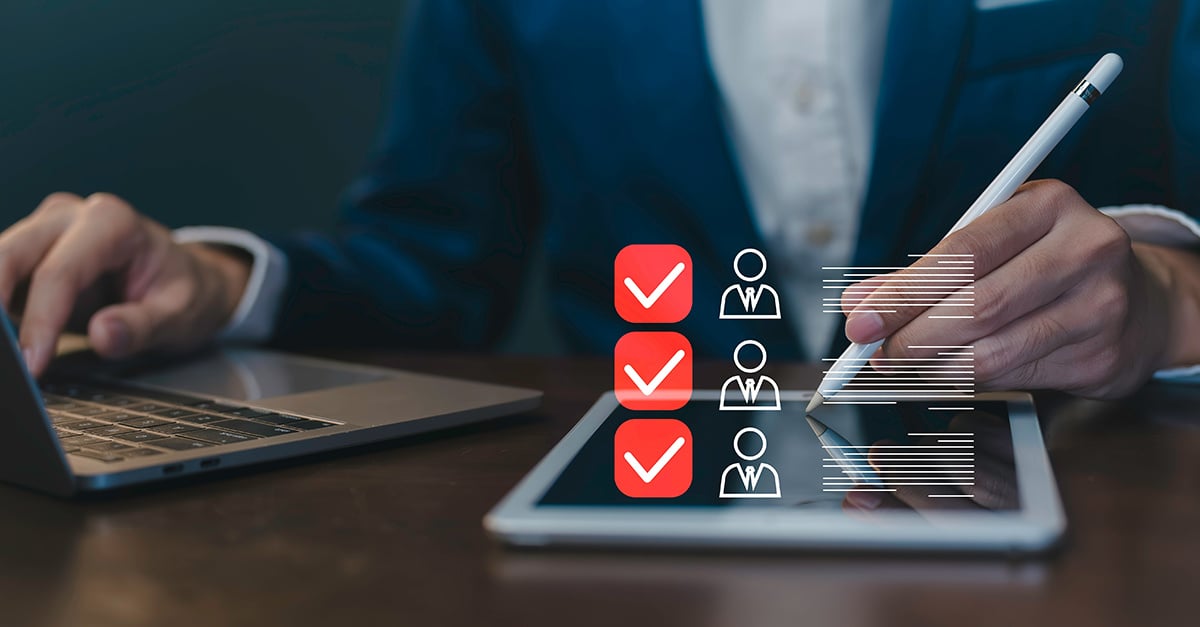
Best Threat Detection Tools for Stronger Security in 2025
03 Apr, 2025, 28 min read
In 2024 alone, global cybercrime caused over $9 trillion in damages and is projected to surge to $13.82 trillion by 2028. As you read this, many corporations, government agencies, and even small businesses have already fallen victim to sophisticated threats that bypass traditional defenses.
The problem? Threat actors are becoming faster, smarter, and more relentless than ever. Fortunately, you don’t have to be defenseless. Cyber threat detection software solutions offer a powerful line of defense.
These tools use real-time monitoring, AI and machine learning, and behavioral analytics to detect anomalies before they become disasters. They analyze network traffic, monitor user behavior, and enable security teams to implement effective cyber threat detection and response strategies.
In this guide, we’ve reviewed the 15 best threat detection tools available on the market today.
What Are Threat Detection Tools?
Cyber threat detection tools are advanced cyber security software solutions that monitor, detect, and respond to malicious activity across networks, endpoints, applications, and cloud environments. Also known as threat detection and response tools, they help organizations detect and prevent breaches before damage occurs.
These tools collect data from IT systems and security tools, analyzing it for precursors (signs of an impending attack) and indicators (unusual activity signaling an ongoing or past breach).
They use technologies like intrusion detection, network traffic analysis, and AI-driven threat assessment to identify and respond to risks in real time.
The Best Threat Detection Software at a Glance
Below is a concise comparison table for the best cyber threat detection software solutions
|
Software |
Best For |
Unique Use Cases |
Key Features |
|---|---|---|---|
|
Atlas Systems(Best Overall) |
Comprehensive cybersecurity |
|
AI-powered threat detection and real-time monitoring, managed threat detection and response, advanced analytics, customizable dashboards, automated incident response |
|
Trend Micro XDR |
Extended detection and response across endpoints, email, servers, and networks |
|
Automated threat response, centralized visibility, AI-driven insights |
|
Cortex XDR (Palo Alto) |
Identity threat detection and endpoint response |
|
Behavioral analytics, integrated SIEM, automated investigation |
|
ESET XDR |
Proactive threat hunting and managed detection services |
|
Machine learning detection, multi-layered protection, cloud-based |
|
Microsoft Defender XDR |
Cloud-native XDR for enterprises |
|
Unified security platform, priority alerts, SIEM integration |
|
CrowdStrike Falcon |
Endpoint detection & response |
|
AI-powered IOAs,MITRE ATT&CK mapping, 24/7 threat monitoring |
|
SentinelOne Singularity |
Autonomous endpoint protection |
|
Behavioral AI, real-time response, unified platform |
|
Snort |
Open-source intrusion prevention |
|
Rule-based detection, customizable rules |
|
SolarWinds Threat Monitor |
Log analysis & threat detection |
|
Log correlation, automated alerts, customizable dashboards |
|
UpGuard |
Data leak detection and security posture management |
|
Data scanning, risk scoring, automated reporting |
|
Trustwave MDR |
Managed detection & response |
|
Expert-led SOC, threat intelligence, rapid remediation |
|
Patrowl |
Real-time external threat detection |
|
Real-time alerts, API integrations, proactive threat hunting |
|
SAP Enterprise Threat Detection |
SAP environment threat detection |
|
SAP-specific analytics, real-time alerts, integration with SAP systems |
|
NETWRIX Threat Manager |
Insider threat detection |
|
Real-time alerts, risk scoring, automated response |
|
Akamai API Security |
API threat detection |
|
API traffic monitoring, behavioral analysis, real-time protection |
Top 15 Cyber Threat Detection Tools in 2025
Here are the best cyber threat detection platforms to strengthen your security.
1. Atlas Systems
Atlas Systems is the leading cyber security solution tailored for modern IT environments facing sophisticated, ever-evolving cyber threats. It delivers a comprehensive, proactive approach to threat detection and response through its intelligent, AI-powered platform.
At its core, Atlas Systems employs a strategic three-step security framework: Assess, Enable, and Manage. This model ensures a full spectrum defense—from identifying vulnerabilities to enforcing protections and sustaining ongoing cyber health.
Through integration with Tenable, Atlas enables you to perform in-depth vulnerability assessments, penetration testing, and IT risk evaluations across cloud, API, application, and network layers. They also offer managed detection and response (MDR) and 24x7 security operations center (SOC) services for real-time detection and mitigation of potential attacks.
Atlas Systems also strengthens client defenses with configuration and patch management, email/web security, social engineering defense, and identity and access management (IAM).
With constant threat monitoring, advanced analytics, and expert human oversight, Atlas helps you remain resilient, compliant, and secure against emerging threats.
Key features of Atlas Systems’ threat detection software
- 24/7 managed SOC services: Atlas Systems' managed SOC delivers continuous threat identification, analysis, and rapid response. The SOC is manned by expert analysts and powered by AI to monitor systems in real time, identify suspicious activity, automate responses, and mitigate incidents before they escalate.
- Managed detection and response (MDR): We provide managed detection and response capabilities to provide you with AI-powered, real-time threat detection and prompt response. Through advanced analytics, the threat detection system continuously monitors your IT infrastructure support to spot anomalies and enforce immediate containment strategies. MDR helps reduce response times, minimize breach impact, and ensure expert-led analysis of threat behavior and sources.
- Threat and vulnerability management: Atlas Systems offers proactive threat and vulnerability management that scans IT environments for known weaknesses and ranks them by risk. It delivers actionable intelligence on vulnerabilities, automates patch management, and provides tailored mitigation plans to reduce exposure windows and improve security posture with continuous assessments and updates.
- Penetration testing: We provide real-world attack simulation through penetration testing to expose hidden vulnerabilities. This simulation-based service shows how well your defenses hold up under attack, identifies exploitable entry points, and helps reinforce weak spots before they’re targeted by malicious actors. It’s a key tool for refining security strategy with hands-on insights.
Pros
- Comprehensive, AI-powered defense suite: Clients praise Atlas for their robust end-to-end cybersecurity framework powered by AI. The seamless integration of risk assessment, MDR, SOC, IAM, and vulnerability scanning offers a 360° security solution that adapts to diverse IT environments—from cloud to on-premises.
- Expert-led real-time monitoring: The software’s 24/7 SOC and MDR offer rapid incident detection and expert human intervention, enabling faster containment and reduced breach impact.
- Actionable reporting and compliance support: Detailed reporting and compliance-focused assessments provide actionable recommendations to improve threat visibility, decision-making, and adherence to regulatory standards.
Cons
- Learning curve: Atlas Systems is a top choice for businesses seeking reliable, scalable, and proactive cybersecurity solutions. However, you’ll need time to fully understand our features
2. Trend Vision One by Trend Micro
Trend Vision One is Trend Micro’s threat detection software that offers extended detection and response capabilities to provide early and precise threat detection across multiple security layers.
It uses advanced AI/ML models and native telemetry to correlate low-confidence events, detect anomalous behavior, and respond to complex, multi-layered attacks. The platform integrates endpoint, network, identity, email, cloud, and OT detection and response capabilities to provide a unified view of threats across IT and OT environments.
Key features
- Endpoint detection and response (EDR): Provides visibility into endpoints and servers, automatically correlating data across security layers for faster threat detection, investigation, and response.
- Network detection and response (NDR): Identifies and protects unmanaged devices like routers, laptops, and IoT devices connected to the network.
- Identity threat detection and response (ITDR): Monitors user identities to detect compromised credentials and risky behaviors.
Pros
- Offers a unified view of threats across endpoints, networks, cloud, and OT environments.
- Uses machine learning to detect anomalous behavior and correlate low-confidence events for precise threat detection.
- It integrates with existing security tools and scales to meet the needs of large enterprises.
Cons
- Trend Vision One has a complex user interface which makes it difficult to use for users without technical skills
3. Cortex XDR by Palo Alto Networks
Cortex XDR is a threat detection and response tool offered by Palo Alto Networks that integrates data from endpoints, networks, cloud, and identity sources to provide visibility and protection against cyber threats.
The software employs machine learning (ML) and behavioral analytics to detect stealthy and sophisticated attacks, such as malware, lateral movement, and credential theft, while reducing alert fatigue through intelligent incident management and correlation.
It then offers flexible response options, including real-time threat containment and host restoration.
Key features
- ML-driven analytics: Cortex XDR applies machine learning and behavioral profiling to detect subtle anomalies such as command-and-control, lateral movement, and exfiltration activities, even when attackers bypass traditional detection mechanisms.
- Identity threat detection: The software identifies risky user behaviors such as credential theft and brute force attacks, using behavioral analytics.
- Incident management and scoring: It unifies alerts and maps them to MITRE ATT&CK techniques for faster triage, scoring incidents by severity.
Pros
- Cortex XDR integrates data from multiple sources to provide visibility and detection capabilities across endpoints, networks, and cloud environments.
- The platform enables real-time threat containment, host restoration, and integration with enforcement points for rapid mitigation.
Cons
- Setting up and configuring rules and integrations can be complex for new users or smaller teams without dedicated security expertise
- The solution may be expensive for smaller organizations, particularly when scaling across large environments
4. ESET PROTECT MDR
ESET PROTECT offers advanced threat detection solutions like managed detection & response (MDR) and extended detection & response (XDR).
These tools combine AI-driven analytics with human expertise to deliver rapid threat detection, incident response, and proactive threat hunting.
The software leverages its global telemetry network, 35+ years of experience, and partnerships with organizations like CISA to provide unparalleled cybersecurity protection. Its solutions are designed to meet compliance requirements, tackle zero-day attacks, and ensure business continuity.
Key features
- 24/7 human-led MDR with AI: ESET’s MDR service combines AI-powered analytics with expert threat hunters to monitor, detect, and respond to threats in real time.
- ESET inspect: ESET Inspect, the core of ESET’s XDR, provides visibility into system behavior, enabling rapid identification of anomalous activity, root cause analysis, and response to targeted attacks.
- Real-time global threat intelligence: Backed by ESET LiveGrid®, a cloud-based reputation system, the platform delivers behavior- and reputation-based detection sourced from over 100M global sensors for up-to-the-minute cyber threat visibility.
Pros
- Highly responsive threat detection with fast resolution times
- Intuitive interface with customizable controls and clear visibility
- Reliable detection of zero-day and fileless attacks with minimal system impact
Cons
ESET PROTECT MDR is very technical and would need someone with expertise in the security area, which makes it very difficult for new users to deploy this software
5. Microsoft Defender XDR
Microsoft Defender XDR is a cloud-native extended detection and response (XDR) platform designed to unify threat detection, investigation, and response across Microsoft 365 environments and beyond. It provides end-to-end visibility across endpoints, hybrid identities, IoT, SaaS apps, and collaboration tools.
The platform integrates with SIEM solutions and identity platforms to centralize threat intelligence and incident response. Microsoft Defender XDR automates detection and containment of advanced attacks while enabling security teams to take faster, informed actions against complex cyber threats across the entire cyberattack chain.
Key features
- Unified threat visibility: Defender XDR offers incident-level visibility across endpoints, identities, email, and cloud apps, enabling security teams to detect and respond to threats across the entire attack surface efficiently.
- Automated threat disruption: The solution automatically disrupts advanced cyberattacks, such as phishing and business email compromise
- Cross-domain correlation: It correlates data across devices, identities, applications, and infrastructure to expose attack sequences
Pros
- Microsoft Defender XDR offers seamless integration with Microsoft 365 tools, centralized threat management, and automated response workflows.
- Designed for large organizations, it provides robust protection across hybrid, cloud, and on-premises environments.
Cons
- Premium features and scalability may come at a higher price point compared to some competitors.
- Some users report steep learning curve and performance issues when integrating Defender XDR into non-Microsoft or hybrid environments.
6. CrowdStrike Falcon
CrowdStrike Falcon offers threat detection software for users to prevent cloud breaches and detect active cyber threats in real time. Its intrusion detection software leverages AI-driven Indicators of Attack (IOAs), telemetry, and machine learning to monitor cloud workloads, identities, and endpoints.
Aligned with the MITRE ATT&CK framework, it provides full cloud visibility, proactive detection, and rapid response to threats. Its integrated intrusion prevention system software capabilities enable real-time blocking of malicious activity through a lightweight, unified sensor.
Key features
- AI-powered threat detection: Falcon leverages AI and machine learning to identify active and dormant threats across endpoints and cloud workloads
- Unified cloud and endpoint protection: The platform integrates cloud control plane data, runtime events, and threat intelligence to visualize attack paths.
- MITRE ATT&CK-aligned insights: Falcon maps detected threats to MITRE ATT&CK to recommend proactive remediation.
Pros
- Uses AI and telemetry to detect sophisticated threats early before they strike
- It integrates cloud and endpoint protection
Cons
- Some users find the pricing steep, especially for smaller organizations
- Crowdstrike Falcon cloud security does not have very good integrations with SIEM
7. SentinelOne Singularity
SentinelOne Singularity Complete is designed to protect endpoints, servers, and cloud workloads through AI-powered prevention, detection, and automated response. It unifies endpoint, cloud, and identity protection into a centralized platform, enabling enterprises to detect known and unknown threats with machine-speed efficiency.
Leveraging behavioral and static AI models, Singularity monitors and responds to threats across environments in real time. Its autonomous features, including 1-click rollback and forensic data collection, empower you to remediate incidents without human intervention.
Key features
- Behavioral AI detection: Singularity uses static and behavioral AI models to detect ransomware and zero-day threats in real time
- Autonomous response: The software automates incident response with policy-driven actions, including patented 1-click rollback to remediate threats and minimize damage
- Unified agent and telemetry: It deploys a single lightweight agent that offers visibility across operating systems and cloud workloads, collecting advanced telemetry and correlating data for faster investigations and improved threat context.
Pros
Enables faster threat detection and autonomous response
Provides an intuitive UI with centralized management for endpoints, servers, and cloud
Cons
- The platform’s advanced features may require additional training for effective utilization
- Some users report occasional false positives in complex environments
8. Snort
Snort is open-source intrusion prevention and threat detection software designed to identify and mitigate malicious network activity.
It operates by analyzing network traffic using a rule-based system to detect threats like malware, exploits, and suspicious behavior.
Snort can function as a packet sniffer, packet logger, or full-scale intrusion prevention software, providing real-time alerts and blocking malicious packets. It is widely used for cyber threat detection tools due to its flexibility, cost-effectiveness, and robust community support.
Key features
- Rule-based threat detection: Snort uses customizable rules to identify malicious network activity, such as malware, exploits, and unauthorized access attempts, ensuring precise threat detection capabilities
- Inline packet inspection: As an inline intrusion prevention system, Snort inspects and blocks malicious packets before they enter the network
- Real-time alerting: It generates instant alerts when suspicious activity is detected, enabling quick response to potential cyber threats and minimizing damage
Pros
- As open-source software, Snort is free to use, making it an affordable option for businesses and individuals
- It is customizable with extensive rule sets for precise threat detection
- Snort’s active community provides regular updates, rule sets, and troubleshooting assistance
Cons
- Snort requires technical expertise to configure and manage, which can be challenging for beginners.
- Some users say Snort tends to give false positives to applications that might have legitimate network traffic
9. SolarWinds Threat Monitor
SolarWinds Security Event Manager is a comprehensive threat detection software designed to centralize and analyze log data across an organization’s entire IT infrastructure.
It automates cyber threat detection by correlating logs from endpoints like servers, routers, firewalls, and applications with integrated threat intelligence feeds. This allows real-time identification of suspicious behaviors such as malicious IP activity, file tampering, or unauthorized USB usage.
With built-in alerting and customizable response rules, SEM reduces manual intervention by automating responses to critical events. It helps IT teams maintain continuous visibility, mitigate security threats swiftly, and enforce internal security policies effectively.
Key features
- Real-time log correlation and threat intelligence: The software collects logs from all network endpoints and automatically correlates them with real-time threat intelligence feeds to detect malicious IPs, system errors, and attack indicators instantly.
- Automated active response: Admins can define automated responses to threats, such as blocking IPs, killing processes, or disconnecting USB devices to reduce response time and minimize the impact of cyberattacks.
- File integrity monitoring and USB detection: It tracks unauthorized changes to files, folders, and registry settings, monitors USB device usage in real time, and offers alerts and options to block or quarantine suspicious activity.
Pros
- SEM tracks end-user actions, including USB usage and privileged account activity to enhance insider threat detection.
- The software’s easy-to-navigate dashboard and log filtering features make incident analysis faster for IT teams.
- It aggregates and normalizes log data from multiple sources to provide a unified view of network activity and simplify threat analysis.
Cons
- High log volume can strain performance
- Some users note the lack of advanced machine learning or AI-driven threat analysis compared to competitors
10. UpGuard
UpGuard's threat detection software focuses on early discovery of sensitive data exposures across online file storage, databases, and web-based content platforms. As a cyber threat detection tool, it continuously monitors hundreds of vectors to find leaked customer information, intellectual property, or credentials.
Each alert is verified and reviewed by UpGuard’s cybersecurity experts to reduce false positives and provide detailed context, including who’s responsible, the impacted systems, and data classification.
With rapid response capabilities and built-in remediation workflows, UpGuard helps businesses mitigate the risk of costly data breaches and regulatory violations by acting swiftly on verified data leak incidents.
Key features
- Verified data leak alerts: Every leak alert is manually reviewed by UpGuard’s cybersecurity analysts to ensure accuracy, reduce false positives, and provide actionable intelligence with details like recency, responsible party, and impacted data classes.
- Comprehensive monitoring: UpGuard’s proprietary engine scans billions of records across online file storage (e.g., Amazon S3), exposed databases (e.g., MongoDB), and indexed folders to detect data exposures hard to find elsewhere.
- Remediation and response: The software provides expert support and automated workflows for incident response, including takedowns, forensic analysis, and API-based remediation to quickly address and resolve discovered data leaks.
Pros
- UpGuard’s verified alerts and risk assessments minimize false positives
- It monitors diverse data sources and provides comprehensive protection against leaks from cloud storage, databases, and more
- The software provides access to cybersecurity analysts for incident response and remediation
Cons
- UpGuard offers limited customization capabilities for alert parameters
- Some users have reported challenges when setting up vendor modules and risk profiles
11. Trustwave
Trustwave offers managed detection and response services to help you identify, hunt, and eliminate active threats using advanced analytics and threat intelligence. This threat detection software offers 24/7/365 monitoring through Trustwave SpiderLabs and integrates with existing security infrastructure for maximum value.
Through the Trustwave Fusion® cloud-native platform, you gain full visibility and control over threats, accessible via web or mobile. The solution also enhances Microsoft Security deployments, providing support for migrations, integration, and optimization. Trustwave’s MDR helps you reduce risk and improve your cybersecurity posture with expert-led threat management.
Key features
- Trustwave Fusion platform: The platform’s cloud-native operations hub offers centralized visibility and response across hybrid environments
- 24/7 threat hunting and monitoring: Trustwave delivers around-the-clock threat detection via global SOCs and elite SpiderLabs experts
- Microsoft security integration: The software optimizes Microsoft security usage with services tailored for migration, support, and integration across the full Microsoft ecosystem to enhance enterprise-wide protection.
Pros
- The software offers real-time threat visibility and response capabilities to improve operational efficiency
- It integrates with existing security stacks and Microsoft environments.
Cons
- Pricing can be high for smaller businesses
- There is a steep learning curve for non-technical users navigating the Fusion platform
12. Patrowl
Patrowl is a cyber threat detection tool designed to identify, analyze, and mitigate vulnerabilities in real time. The software works by simulating attacks and assessing system weaknesses to help you proactively secure your infrastructure.
It evaluates vulnerabilities based on technical criticality (CVSSv3), asset importance, and origin, then deploys tailored threat detection and response mechanisms. This proactive approach strengthens system resilience and minimizes the risk of cyberattacks.
Key features
- Real-time threat detection: Patrowl continuously monitors systems to identify external threats and vulnerabilities and then provides instant alerts to prevent potential breaches.
- External penetration testing: This feature simulates real-world cyberattacks to evaluate external system defenses
- Threat prioritization using CVSSv3: The software categorizes vulnerabilities based on the Common Vulnerability Scoring System (CVSSv3), asset value, and exploit availability
Pros
- Patrowl’s automation significantly reduces manual effort in vulnerability scanning
- Its real-time alerts and clear threat prioritization allow quicker remediation
Cons
- Some users report limited flexibility in tailoring scans to specific organizational needs
- Some users mention limited integrations with third-party tools and a steep learning curve for new users unfamiliar with threat modeling
13. SAP Enterprise Threat Detection
SAP offers a cyber threat detection tool for monitoring, identifying, and neutralizing threats in real time within SAP applications. As a threat detection software, it offers SIEM capabilities tailored for SAP environments to enable rapid analysis of suspicious activity and forensic investigation.
The software supports on-premise or cloud deployment and provides prioritized alerts based on risk.
With automated detection patterns, deep log correlation, and integration capabilities, SAP helps reduce operational disruption and protect sensitive assets while maintaining compliance with data protection and audit regulations. It is also available as a 24/7 managed service.
Key features
- Log correlation and analysis: The software aggregates and correlates vast log data across SAP systems to detect anomalies, uncover hidden attack patterns, and provide a holistic view of security events
- Automated threat detection and alerting: It uses predefined and customizable detection patterns to identify SAP-specific threats in real time and triggers prioritized alerts for swift response and integration with external security tools.
- Straightforward integration: It integrates with both SAP and non-SAP systems, including database and application layers, while supporting secure log transmission via an exclusive kernel API to prevent tampering.
Pros
- The software is highly customizable with preconfigured detection patterns for known threats.
- It provides seamless integration with SAP and third-party systems.
Cons
- Some users report complex configurations and steep learning curves for non-SAP security teams.
14. Netwrix Threat Manager
Formerly Netwrix StealthDEFEND, Netwrix Threat Manager is designed to rapidly identify and respond to advanced threats and abnormal behavior within complex IT environments.
The software uses machine learning and user behavior analytics to build behavior profiles and spot anomalies to detect ransomware, data exfiltration, suspicious access, and more.
This threat detection software enhances visibility into user activity, automates incident response, and integrates with SIEM tools to strengthen overall security posture.
Key features
- Real-time alerting: Netwrix Threat Manager delivers instant alerts on suspicious behavior, whether it’s insider misuse or an external attack via email or mobile notifications for teams act fast and reduce exposure time.
- Automated response: The software offers preconfigured response actions and integration with PowerShell or webhooks for immediate action upon threat detection.
- Machine learning and user behavior analytics: It builds user behavior profiles to identify truly suspicious activities
Pros
- Netwrix offers behavior-based detection to reduce false positives and identify subtle anomalies
- It also deploys built-in deception tools to improve threat visibility and incident understanding
- The software integrates with SIEM and the software you already use
Cons
- Limited customization in dashboard views.
- Initial setup may require PowerShell expertise.
15. Akamai-API Security
If not properly managed, APIs can become a hacker’s gateway for devastating data breaches.
For instance, in January 2024, an exposed Trello API compromised data of more than 15 million users by allowing users to link private email addresses to Trello accounts.
Fortunately, Akamai-API Security offers handy cyber threat detection software designed to protect APIs from rising threats such as data theft, abuse, and malicious bots.
As part of Akamai’s broader Singularity™ Complete platform, this threat detection software provides continuous discovery, real-time analysis, and automated detection of API vulnerabilities.
It offers full visibility across your API estate, identifying hidden, shadow, and rogue APIs while analyzing behavior to prevent misuse.
Key features
- Continuous API discovery and visibility: Akamai-API Security automatically discovers and inventories all APIs, including shadow, zombie, and rogue APIs to provide complete visibility into your API estate
- OWASP risk analysis and vulnerability prioritization: The platform scans APIs for OWASP Top 10 vulnerabilities, prioritizing findings based on real-world impact and enabling rapid, targeted remediation of high-risk issues before they are exploited
- Real-time threat detection: It uses machine learning to identify anomalous usage, API attacks, and data leakage, enabling proactive threat mitigation
Pros
- The software offers full visibility into API traffic, domains, and vulnerabilities to help you secure your entire API ecosystem effectively
- It integrates with CI/CD pipelines and existing security tools
Cons
- Initial configuration and integration can be challenging for users without technical expertise.
- Premium features may require additional licensing or managed services.
Key Features of Effective Threat Detection Tools
To effectively detect cyber threats and safeguard your IT systems, your threat detection software should have the following features:

- Central visibility: The best threat detection software provides a unified dashboard, offering real-time insights across all endpoints, networks, and cloud environments.
- Threat intelligence: Top-tier cyber threat detection tools use global threat feeds, AI-driven analysis, and behavioral analytics to detect known and emerging risks.
- Integrations with other platforms: Effective threat detection tools seamlessly integrate with SIEM, firewalls, and endpoint protection systems. This ensures automated data sharing, faster incident response, and a stronger security posture across all layers.
- Automated threat detection (active and dormant threats): Advanced threat detection software uses machine learning to spot both active attacks and hidden, dormant threats. Automation reduces manual workload, improves detection accuracy, and mitigates breaches before they escalate.
- Scalability: As your business grows, the software must scale effortlessly. The best cybersecurity software adapts to increased workloads, new devices, and evolving threats without compromising performance or security.
Benefits of Threat Detection Tools
The best cyber threat detection can benefit your business in the following ways:

- Proactive threat prevention: The best threat detection tools identify risks before they cause damage, stopping malware, ransomware, and zero-day exploits in their tracks.
- Faster incident response: Threat detection tools provide real-time alerts and automated workflows to help security teams react swiftly and minimize damage.
- Reduced false positives: Advanced threat detection software uses AI and behavioral analysis to distinguish real threats from harmless anomalies which saves time and prevents alert fatigue for security teams.
- Compliance and regulatory alignment: Many industries require robust security monitoring. The best cybersecurity software helps meet compliance standards (like GDPR, HIPAA, or PCI DSS) by providing audit logs, threat reports, and data protection measures.
- Cost savings: Preventing breaches is cheaper than cleaning up after one. According to IBM, organizations that deploy automated threat detection tools save up to $2.22 million on average. Investing in tools for detecting threats reduces financial losses from data theft, fines, and reputational damage.
Use Atlas Systems for Automated Threat Detection
When looking for threat detection software, you need to consider a comprehensive solution that offers advanced tools and security experts who can offer managed threat detection and remediation.
That’s what Atlas Systems offers. We deliver enterprise-grade protection with unmatched automation, expert oversight, and seamless integration.
Our platform combines 24/7 SOC monitoring, managed detection and response (MDR), and proactive vulnerability management to deliver unmatched protection against evolving threats.
Unlike other tools that focus on specific attack surfaces, Atlas Systems provides end-to-end security—assessing risks, enabling defenses, and managing threats in real time.
Speak with our security specialists to explore how Atlas Systems can meet your threat detection needs today!
FAQs about Threat Detection Tools
Which is better: An in-house threat detection tool or outsourced MDR services?
Choosing between in-house threat detection software and outsourced MDR services depends on resources and expertise. In-house tools for detecting threats offer control but require skilled staff. Outsourced MDR services provide 24/7 monitoring and advanced cyber threat detection tools, ideal for organizations lacking internal cybersecurity capabilities or needing faster response times.
How do I choose the right threat detection tool for my organization?
To choose the right threat detection software, assess your organization’s size, budget, and existing security infrastructure. Look for cyber threat detection tools with real-time alerts, scalability, and integration with current systems. Evaluate vendor support, threat intelligence capabilities, and whether the tools for detecting threats align with compliance and industry-specific requirements.
What does a threat detection system do?
Cyber threat detection tools continuously monitor networks, endpoints, and applications for malicious activity, using behavior analysis, signature matching, and machine learning. They then alert security teams to potential breaches, automate responses, and log incidents for investigation.
Related Reading
stay ahead of CMS deadlines!




%20imagery%20-%20assuring%20quality%201.png?width=103&height=87&name=2024-12-24%20PRIME%20PCM%20(Monitoring)%20imagery%20-%20assuring%20quality%201.png)










